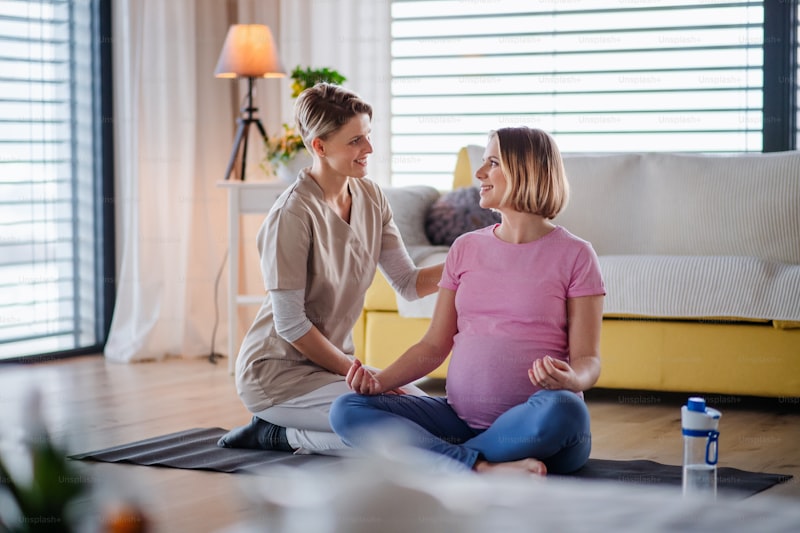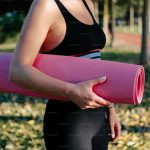MS affects more than 2.5 million people worldwide. It usually occurs in young adults aged between 20 and 40. It is far more common in women. There is no cure for MS.
When I qualified as a physiotherapist — all those years ago — we were taught that exercise was not good for patients with multiple sclerosis (MS). In my heart of hearts, I was never very comfortable with that because it has always been my belief that keeping people moving (regardless of their health problems) had to ultimately be good for body and mind. Well, according to some recent studies I am now delighted to tell you that I was right and yoga is promising to be helpful for MS sufferers. Here’s why…
What Is Multiple Sclerosis?
MS is a disease that makes our immune system attack the fatty coverings of the nerves in our central nervous system, including the brain and spinal cord. Common symptoms include fatigue, loss of control of muscles, difficulty walking, bladder & bowel problems, and pain & depression to name but a few. Many MS sufferers report that their quality of life reduces as the disease progresses and it gets harder to look after themselves and get around. I think most sufferers would agree that MS can be pretty horrible.
It used to be thought that any form of exercise would increase the fatigue element of MS, particularly exercise that caused overheating. More recently, though, studies are showing that exercise that combines balancing, stretching and strengthening can be accessible to MS sufferers and help to reduce some of the symptoms of the disease. Do we know any forms of exercise that incorporate all that? You bet we do — enter yoga!
What Scientists Are Saying
A medical review from 2014 was undecided on the effects of yoga on MS symptoms, but it did state that it was “not associated with any serious adverse effects.” In other words, yoga won’t make MS worse so in my books it is worth trying. Which I reckon is as good a place as any to start! A more recent review of scientific studies went much further and concluded that:
“Yoga is regarded as safe, inexpensive and may be more accessible for patients with spasticity and impaired mobility that other forms of exercise.”
This paper quoted studies that had found yoga reduces depression, anxiety, fatigue, pain and perceived stress as well as increasing balance, walking speed and step length in MS sufferers. On top of that, an Iranian study published in June this year looked at MS sufferers doing yoga. The outcome? Yoga classes and home practice are great for reducing fatigue in students with MS.
Applying Research In Practice
Now that we’ve established all that, how do we use this new knowledge? Which poses are most beneficial? I wish I could just list some āsanas or sequences that would be perfect, but it’s never that easy is it? People with MS generally experience periods where the disease is very disabling alongside periods of remission where they are able to do more. Every student with this disease will be different and their needs will vary from day to day so their yoga practice needs to be responsive to these changes. There is no one size fits all solution but we can consider some basic principles:
Keep it cool — Slow, steady practice that does not involve cardiovascular elements like vinyāsa would be ideal. Restorative or Yin Yoga classes have a good sequencing and pace to meet the needs of MS patients. Avoid styles like Ashtanga Vinyāsa, Power Yoga, Bikram and other forms of hot yoga.
Modifications make things possible — If a student is a little unsteady on their feet but still wishes to try standing poses then try a wider and shorter stride to make things more achievable. Maybe place hands on hips in Warrior poses or hands on to a chair or blocks in forward folds. Use walls to help balance but always keep it safe. Better to be in a steady pose that is more accessible than wobbling in the full expression of the pose.
Take a seat — If a student is becoming more unsteady or maybe a wheelchair user then chair yoga would be a great way to practice at home and in a class setting. Lots of stretching and twisting can be done in sitting and many arm poses will work — think cow-face or eagle arms — while maintaining a tall sitting posture and grounding through the sit bones.
Lovely lying down — Lying flat is great for anyone who spends a lot of time sitting, and poses like Cobra or Upward-Facing Dog will stretch out the fronts of hips beautifully if the student has enough arm strength. Of course Corpse Pose (Śavāsana) or Reclined Cobbler can be supplemented with blocks, blankets, bolsters, etc to find a comfortable position for relaxation and/or meditation.
Don’t forget to breathe — Deep breathing can be done in any position and doesn’t need to be technical prānāyāma. Simply lying as flat as you are comfortable and belly (diaphragmatic) breathing for a few minutes as part of your practice will calm the nervous system and improve stress management.
Meditation — Well worth a try for all the same reasons that breathing deeply is good and so many more.
A Change In Verdict
It seems to me that the latest research is suggesting a few things:
- Gentle yoga that does not make a person break into a sweat is likely to be good for anyone with MS.
- Yoga classes and home practice are equally good which gives options depending on the student’s mobility.
I am obviously delighted to to know I was right all along, but I am even more delighted that I can safely and confidently offer yoga to anyone unfortunate enough to suffer from MS. It makes my job as a physiotherapist and yoga teacher easier, since I can predict the areas of their life that are likely to improve as a result of their yoga practice. Equally important, I can counsel where yoga has yet to be proven to effective. I love it when science proves what yogis have known for centuries!
The potential for yoga to help MS is huge and this new research is very exciting! Remember you don’t have to be doing unsupported headstands to be a yogi — yoga is so much more than that. I’d love to know if anyone out there is already finding yoga beneficial for their MS, do get in touch and share your experiences, either by writing in the comments or reaching out to me through the links below!













